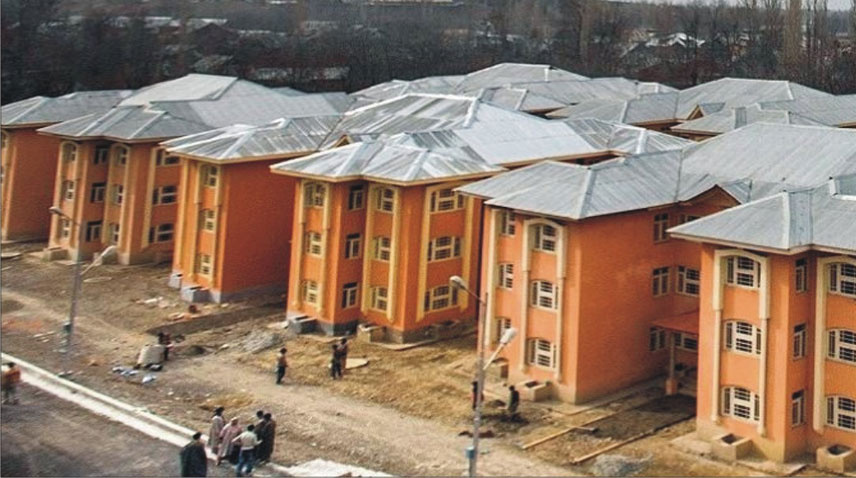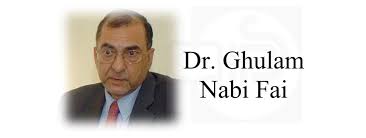 In August 2019, the Modi government, in line with a pledge to its right-wing supporters, unilaterally revoked Jammu and Kashmir’s autonomy by abrogating Articles 370 and 35A of the Indian Constitution, bifurcating it into two territories under central government. This move involved deploying thousands of troops, dissolving the state government, imprisoning local politicians and All Parties Hurriyat Conference leaders and implementing the world’s longest internet shutdown, lasting 18 months.
In August 2019, the Modi government, in line with a pledge to its right-wing supporters, unilaterally revoked Jammu and Kashmir’s autonomy by abrogating Articles 370 and 35A of the Indian Constitution, bifurcating it into two territories under central government. This move involved deploying thousands of troops, dissolving the state government, imprisoning local politicians and All Parties Hurriyat Conference leaders and implementing the world’s longest internet shutdown, lasting 18 months.
While Article 370 was often seen as largely symbolic, Article 35A of the Constitution played a crucial role in preserving Kashmiri identity. Article 35A granted Kashmir’s legislative assembly the exclusive authority to define “permanent residents.” Importantly, the local government could assign special privileges—such as the right to purchase land—to permanent residents. Consequently, property ownership in a region long claimed by India was restricted to Kashmiris only. The revocation of Article 35A by the Indian government unearthed a fear that Kashmiris have grappled with since Independence: that India would bring in non-Kashmiri settlers to dilute the region’s ethnic and religious makeup. And that’s what India had been doing since.
Although in the past, the colonial lens has been applied to Kashmir, the revocation of the territory’s autonomy suggests that the settler colonial lens may be more appropriate. Settler colonialism revolves around the establishment of a settler class whose aim is to not only occupy Indigenous land but also to remove the Indigenous people who oppose them. Thus, as non-Kashmiris flood the region as new residents, India’s identity as a settler state becomes more apparent.
In May 2020, the Indian government introduced a new domicile law for Jammu and Kashmir. This law allows individuals who have resided in the region for a certain period, and meet specific criteria, to apply for domicile status.
As of June 2021, the administration in IIOJK had issued over 3.8 million domicile certificates. These include both residents who previously held state subject certificates and new applicants who became eligible under the revised domicile rules. Apprehensions are ripe that more than 900,000 Indian soldiers and over 600,000 migrant laborers present in the territory might also be granted the domicile status in the coming days and months. The removal of Article 35A (which was part of the broader Article 370 framework) has allowed non-residents to buy property in Jammu and Kashmir, which could lead to demographic shifts over time as more people from other states may move to the region.
Conversely, since the abrogation of Article 370, the BJP has facilitated access to the region, enabling non-residents to buy property and register to vote in Kashmir for the first time.
On the other hand, the phenomenon of properties attachments since abrogation of Article 370 and 35A has also impacted the lives of Kashmiris severely. The Modi regime has already sealed over 600 properties in the territory since 2019. Now over 4,000 more properties have been included in the list of the Indian Home Ministry for seizure. India is using National Investigation Agency, Special Investigation Unit (SIU), Special Investigation Agency (SIA) duly assisted by Indian paramilitary Central Reserve Police Force and police personnel establishment to attach the properties of Kashmiris.
India’s settler colonial agenda doesn’t stop here; in July 2023, the New Delhi-appointed administrative head of IIOJK announced a new policy to provide affordable housing and land for landless people. The policy proposes offering five marlas of land and constructing houses under the Prime Minister Housing Scheme-Rural, an Indian government initiative aimed at providing housing to the rural poor.
Additionally, the federal rural development ministry set a target to build 199,550 new houses in the region for the financial year 2023-24, specifically for people belonging to the economically weaker sections and low-income groups.
However, this move evoked suspicions among Kashmiri activists and politicians who expressed concerns about these schemes. They accused the Indian the government of maintaining “deliberate ambiguity” about the beneficiaries.
A report released by the Forum for Human Rights in Jammu and Kashmir, a group advocating for the rights of the Kashmiri people pointed out that there was widespread discrepancy between the figures for the landless and the housing allocation and the matter is quite suspicious. As quoted by Al-Jazeera in its August 2023 report, there were 19,047 landless people in the region in 2021. “Presumably, the allocation of 199,550 new houses will include urban migrants such as laborers, street vendors, and rickshaw pullers from other states of India. However, according to the Jammu and Kashmir Housing Board, any Indian citizen who migrated temporarily or permanently for employment, education, or a ‘long-term tourist visit’ would be eligible to apply. If the affordable housing policy is implemented, it could potentially include around a million people,” the report said.
It appears that the Indian government is attempting to introduce poverty and slums into Jammu and Kashmir by purportedly providing housing to homeless individuals, thereby disempowering local residents in terms of land and employment opportunities.
Apart from land disempowerment, as quoted by BJPs Lieutenant Governor Manoj Sinha on February 11, 2024 as many as 154 government employees were also removed from service.
As Patrick Wolfe highlighted in his book “Settler Colonialism and the Elimination of the Native,” settler colonialism is the modern adversary of General Assembly Resolution 1514, which declares speedy and unconditional end [to] colonialism in all its forms and manifestations” as a “necessity.”“subjection of peoples to alien subjugation, domination, and exploitation constitutes a denial of fundamental human rights, [was and is] contrary to the Charter of the United Nations, and [was and is] an impediment to the promotion of world peace and co-operation.”This proclamation passed by UN General Assembly on December 14, 1960 is fondly remembered by the global community as marking the beginning of the decolonization era. Traditional colonial empires superficially collapsed, but the underlying drive to dominate the “other” persisted. Consequently, colonialism of the past did not disappear; instead, it persisted, evolved, and re-emerged in both new and old nations and that’s what India has been applying in IIOJK.
Meanwhile, Lorenzo Veracini, in his book “Introducing: Settler Colonial Studies,” stated that settler colonialism and colonialism are distinct yet interconnected modes of oppression. While traditional colonizers demand, “work for me,” settler colonizers command, “leave.” However, both projects fundamentally involve migration and a dynamic of dominance. Settler colonialism occurs when the state recruits settlers whose goal is not only to occupy Indigenous land but also to eliminate Indigenous resistance.
The domicile laws which promote India’s settler colonialism agenda have been met with opposition from some local political parties and residents who argue that it undermines the unique identity and demographic composition of the territory.
There have been concerns about potential changes in the job market, land ownership, and the cultural fabric of the region due to the influx of non-Kashmiris.
The exact number of non-Kashmiris who have received domicile certificates may not be separately categorized in public records, but the overall issuance of 3.8 million domicile certificates suggests a significant number of new entrants into the legal residency framework of the occupied territory.
Since 1960, settler colonialism has caused significant disruption in numerous global communities: from Indigenous peoples across the Americas, New Zealand, and Australia, to Palestinians and Kashmiris. Unfortunately, the spread of settler colonial forces worldwide has not diminished. After the 2019 abrogation of Jammu and Kashmir’s semi-autonomous status in India, some scholars are concerned that India’s relationship with the region has transformed into a complete form of settler colonialism.








